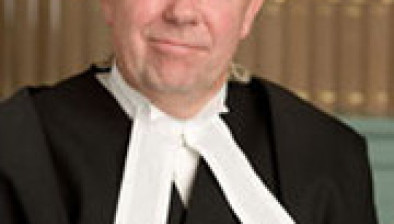High Court: Pedestrian fails to establish negligence of a driver who knocked him down on 100km/h road
A pedestrian who was struck by a driver on an N road in Longford has had his personal injuries claim against the driver dismissed in the High Court.

About this case:
- Citation:[2018] IEHC 835
- Judgment:
- Court:High Court
- Judge:Mr Justice David Keane
Stating that the case turned on the appropriate application of The Rules of the Road, Mr Justice David Keane said that if the pedestrian had followed the advice in that document, the accident could not have happened.
Satisfied that the driver was not negligent, Mr Justice Keane said he was reinforced in this view by the fact that he had been able to bring his vehicle to a halt within five metres of the collision which occurred on a road with a 100km/h speed limit.
The accident
In September 2014, Robert Sienkiewicz was crossing a national primary road in Longford when he was struck by a car being driven by Noel Wall. The accident happened at around 8 pm, before dusk, on a road with a speed limit of 100km/h.
Mr Sienkiewicz suffered a laceration to his forehead which left a visible scar, a fractured molar tooth, and bruising to his face, neck, shoulder and lower back. After the accident, Mr Sienkiewicz suffered from panic attacks and insomnia, for which he was prescribed anti-depressants.
Claim for personal injuries
In May 2016, Mr Sienkiewicz issued personal injury proceedings, pleading that the collision was caused by negligence or breach of duty of Mr Wall in the care, control, management or driving of his car.
Mr Wall denied any negligence or breach of duty, alleging that the accident was caused by Mr Sienkiewicz’s own negligence and breach of duty – particularly failing to keep proper lookout, failing to allow Mr Wall’s vehicle to pass before attempting to cross the road; walking into oncoming traffic; placing himself in danger; causing the accident; being the author of his own misfortune; walking on the public highway; failing to wear appropriate reflective clothing; and failing to carry a torch “during hours of darkness”.
Lighting-up hours
There was disagreement as to whether it was dark when the accident had occurred, and Mr Justice Keane commented that it was “a very peculiar feature” of the case that “each of the parties reversed his previous position on that question at trial”.
Considering evidence from a member of the Gardaí who attended the scene, Mr Justice Keane was not satisfied that the accident occurred during “lighting-up hours” (i.e. when the headlamps of vehicles must be lit (pursuant to Reg. 20(1)(b) of the Road Traffic (Lighting of Vehicles) Regulations 1963))
The Rules of the Road
Mr Justice Keane said the case turned on the appropriate application of The Rules of the Road, which was described in Carr v Olas & Anor [2012] IEHC 59 as “an administrative document which in places endeavours to summarise in non-legal language the requirements of the Road Traffic Acts while also giving practical advice and exhortation to drivers as how best to drive safely”.
Finding, on the balance of probabilities, that the accident occurred after sunset and shortly before dusk, Mr Justice Keane commented that this was “a period of notoriously difficult visibility for motorists”. Mr Sienkiewicz was not wearing high visibility clothing, he was on a portion of a national primary road that was not covered by street lighting (although a much safer portion of that road covered by street lighting was only a little over 100 metres away), and he crossed the road on a diagonal, with his face slightly averted from traffic approaching on the eastbound lane, despite there being a bend in the road to the east. Mr Justice Keane said that Mr Sienkiewicz did not have the right of way in attempting to cross the road.
Referring to The Rules of the Road, Mr Justice Keane said that if Mr Sienkiewicz had followed the advice in that document, the accident described could not have occurred. Consequently, Mr Justice Keane found the proximate cause of the accident to be the negligence of Mr Sienkiewicz.
Mr Justice Keane was also satisfied from the evidence that Mr Wall was driving within the speed limit, with his daylight running lights on, and without any evident defects in his vehicle. Mr Justice Keane said that “[i]n crossing the road as he did, Mr Sienkiewicz presented Mr Wall with an emergency. In both applying his brakes and swerving in attempting to avoid colliding with Mr Sienkiewicz, I am satisfied that Mr Wall responded reasonably. I am reinforced in that view by the fact that he was able to bring his vehicle to a halt within five metres of the point of the collision on a portion of a national primary road with a speed limit of 100 km/h”. He added that The Rules of the Road state “the total minimum stopping distance under dry conditions at that speed is 70 metres”.
Rejecting the suggestion that Mr Wall should have commenced braking as soon as Mr Sienkiewicz became visible on the roadway, Mr Justice Keane said that Mr Wall could not be “faulted for failing to use his vehicle’s horn or to flash its headlights either before or while he was braking and swerving in an unsuccessful attempt to avoid Mr Sienkiewicz”.
Dismissing the claim, Mr Justice Keane said that Mr Sienkiewicz failed to establish any negligence or breach of duty on the part of Mr Wall.










